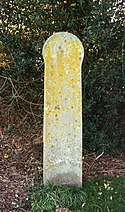Comparison of mandibles, The American Museum journal (c1900-(1918))
Title: The American Museum journal
Identifier: americanmuseumjo14amer (find matches)
Year: c1900-(1918) (c190s)
Authors: American Museum of Natural History
Subjects: Natural history
Publisher: New York : American Museum of Natural History
Contributing Library: American Museum of Natural History Library
Digitizing Sponsor: Biodiversity Heritage Library
View Book Page: Book Viewer
About This Book: Catalog Entry
View All Images: All Images From Book
Click here to view book online to see this illustration in context in a browseable online version of this book.
Text Appearing Before Image:
'
Text Appearing After Image:
I: CI. Fig. 3. The Piltdown lower jaw (B) from a cast in the Williams Collection, compared with the jaws of a female orang-utan (.4) and of a modern man (negro) (C). External views, three-fourths of the natural size. Abbreviations: ah. rm, socket for third lower molar; a. r., ascending ramus: c, canine; c. »., central incisor; con., con- dyle; I. i., lateral inci.sor; mi. mi, ma, first, second, third lower molars;pi , p2, first and second premolars fequivalent to the third and fourth premolars of lower mammals) 192
Note About Images
Relevante Bilder
Relevante Artikel
Piltdown-MenschAls Piltdown-Mensch wurden die vermeintlichen Überreste eines Frühmenschen bekannt, die angeblich zwischen 1908 und 1913 in einer Kiesgrube bei dem Dorf Piltdown in der Nähe von Uckfield in Südostengland gefunden und 1953 als wissenschaftliche Fälschung entlarvt wurden. Die Fragmente eines Schädels und eines Unterkiefers wurden von den damaligen britischen Experten für Überreste eines bisher unbekannten Vorfahren des anatomisch modernen Menschen gehalten. Sie gaben diesem „Frühmenschen“ den Artnamen ‚Eoanthropus dawsoni‘, zu Ehren seines Entdeckers Charles Dawson (1864–1916), eines britischen Rechtsanwalts und Fossiliensammlers. Aus dem Fund wurden komplexe, letztlich irrige Hypothesen zur Herkunft und Evolution des Homo sapiens abgeleitet. .. weiterlesen




